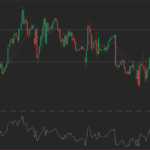 Yesterday’s trade (in GMT terms) saw USD/CAD within the range of 1.3010-1.3105. The pair closed at 1.3099, rising 0.68% compared to Mondays close. It has been the 173rd gain in the past 327 trading days, a third consecutive one and also the steepest one since August 19th. The daily high has been a level unseen since August 10th, when a high of 1.3126 was registered. The major pair has neutralized its earlier drop and is now up 0.54% so far during the current month, following a 0.80% gain in July.
Yesterday’s trade (in GMT terms) saw USD/CAD within the range of 1.3010-1.3105. The pair closed at 1.3099, rising 0.68% compared to Mondays close. It has been the 173rd gain in the past 327 trading days, a third consecutive one and also the steepest one since August 19th. The daily high has been a level unseen since August 10th, when a high of 1.3126 was registered. The major pair has neutralized its earlier drop and is now up 0.54% so far during the current month, following a 0.80% gain in July.
At 8:34 GMT today USD/CAD was inching down 0.03% on the day to trade at 1.3095. The pair touched a daily high at 1.3114 during early Asian trade, undershooting the daily R2 level, and a daily low at 1.3080 during the late phase of the Asian trading session.
Meanwhile, crude oil futures marked their 97th drop out of the past 182 trading days on August 30th. Oil for October delivery went down as low as $46.21 per barrel, or a level unseen since August 17th, and closed at $46.35, losing 1.34% compared to Monday’s close. As of 8:29 GMT today the commodity was edging down 0.47% to trade at $46.13, after going down as low as $45.85 per barrel earlier. Crude oil prices and CAD valuation tend to be strongly positively correlated.
On Wednesday USD/CAD trading may be influenced by the following macroeconomic reports and other events as listed below.
Fundamentals
United States
Fed Speakers
At 7:15 GMT the Fed President for Boston and a FOMC member, Eric Rosengren, is expected to take a statement, followed by the Fed President for Minneapolis and also a member to the Committee, Neel Kashkari, at 12:00 GMT. Any remarks in regard to the central bank’s policy stance or the US economic outlook would heighten USD volatility.
Change in employment by the ADP
Employers in the US non-farm private sector probably added 175 000 new jobs during August, according to the median estimate by experts, following 179 000 new positions added in July. The latter has been the highest number of new jobs added since March, when a revised down figure of 194 000 was reported.
Employment in the goods-producing sector dropped by 6 000, while employment in services increased by 185 000 in July. Employment in trade, transportation and utilities grew by 27 000 during the month, in professional and business services – by 59 000 and in financial activities – by 11 000. On the other hand, employment in US construction fell by 6 000, while companies in the sector of manufacturing added 4 000 more positions.
The employment report by Automated Data Processing Inc. (ADP) is based on data that encompasses 400 000 – 500 000 companies employing over 24 million people, working in the 19 major sectors of the economy. The ADP employment change indicator is calculated in accordance with the same methodology, which the Bureau of Labor Statistics (BLS) uses. Published two days ahead of the government’s employment statistics, this report is used by traders as a reliable predictor of the official non-farm payrolls data. Creation of jobs has a direct link to consumer spending, while the latter is a major driving force behind the US economic growth. In case new job growth was slower than expected in August, this would have a moderate-to-strong bearish effect on the US dollar. The official figure is scheduled to be released at 12:15 GMT.
Chicago manufacturing activity barometer
The Chicago Purchasing Managers’ Index (PMI) probably slowed down to a reading of 54.0 in August, according to market expectations, from 55.8 during the prior month. If so, August would be the third consecutive month of activity expansion in the region. In July, the gauges of new orders and production rose at a slower rate, while the sub-index of employment soared to its highest level since March after three successive months of contraction.
The index reflects business conditions in Chicago’s manufacturing sector and is interrelated with the Manufacturing Index, published by the Institute for Supply Management (ISM). A reading above the key level of 50.0 is indicative of optimism (expansion in manufacturing activity). In case the PMI slowed down more than forecast, this would have a moderate bearish effect on the US dollar. The ISM-Chicago Inc. will release the official reading of this barometer at 13:45 GMT.
Pending Home Sales
The index of pending home sales in the United States probably rose 0.6% in July from a month ago, according to the median estimate by experts. In June pending home sales edged up 0.2%, coming well short of market expectations. In June, sales in the Northeast area rose 3.2%, those in the Midwest were 0.8% more, while sales in the South went down 0.6% and those in the West area slumped 1.3%.
In annual terms, contracts to buy previously owned homes in the United States were 1.0% more in June, rebounding after a 0.2% drop in the preceding period. The latter has been the first annual drop since August 2014.
In case pending home sales increased at a faster pace than anticipated in July, this would have a moderate bullish effect on the US dollar. The National Association of Realtor’s (NAR) will report on the official index performance at 14:00 GMT.
Canada
Gross Domestic Product
Canadian Gross Domestic Product (GDP) probably shrank at a rate of 1.5% in Q2 compared to the same quarter a year earlier, according to the median forecast by experts, following a 2.4% growth in the preceding quarter. The latter has been the fastest annual rate of growth since Q3 2014, when a revised up 3.2% increase was reported (2.8% previously).
Household final consumption expenditure increased at an annualized 2.1% in the first three months of the year, following a 1.4% expansion in Q4 2015.
Business gross capital formation shrank for a fifth consecutive period, down 1.7% in Q1 2016 compared to Q1 2015, after decreasing 6.0% in Q4 2015.
Business entities drew down inventories by another USD 7.0 billion in Q1, following a withdrawal of USD 5.6 billion in the preceding three-month period.
Canada’s exports of goods rose 1.9% in Q1, while exports of services were up 0.7%. At the same time, imports of goods and services grew 0.3% during Q1, alongside slightly stronger domestic demand, according to the report by Statistics Canada.
In case annualized GDP growth met expectations or went even further into negative territory in Q2, this would mount heavy selling pressure on the loonie. The official GDP report is due out at 12:30 GMT.
Bond Yield Spread
The yield on Canada’s 2-year government bonds went as high as 0.603% on August 30th, after which it closed at 0.587% to lose 0.002 percentage point compared to August 29th.
Meanwhile, the yield on US 2-year government bonds climbed as high as 0.829% on August 30th, after which it fell to 0.801% at the close to lose 0.008 percentage point compared to August 29th.
The spread between 2-year US and 2-year Canadian bond yields, which reflects the flow of funds in a short term, narrowed to 0.214% on August 30th from 0.220% on August 29th. The August 30th yield spread has been the lowest one since August 25th, when the difference was 0.201%.
Daily, Weekly and Monthly Pivot Levels
By employing the Camarilla calculation method, the daily levels of importance for USD/CAD are presented as follows:
R1 – 1.3108
R2 – 1.3116
R3 (Range Resistance – Sell) – 1.3125
R4 (Long Breakout) – 1.3151
R5 (Breakout Target 1) – 1.3182
R6 (Breakout Target 2) – 1.3195
S1 – 1.3090
S2 – 1.3082
S3 (Range Support – Buy) – 1.3073
S4 (Short Breakout) – 1.3047
S5 (Breakout Target 1) – 1.3016
S6 (Breakout Target 2) – 1.3003
By using the traditional method of calculation, the weekly levels of importance for USD/CAD are presented as follows:
Central Pivot Point – 1.2950
R1 – 1.3068
R2 – 1.3132
R3 – 1.3250
R4 – 1.3369
S1 – 1.2886
S2 – 1.2768
S3 – 1.2704
S4 – 1.2641
In monthly terms, for USD/CAD we have the following pivots:
Central Pivot Point – 1.3038
R1 – 1.3244
R2 – 1.3460
R3 – 1.3666
R4 – 1.3872
S1 – 1.2822
S2 – 1.2616
S3 – 1.2400
S4 – 1.2184





